Сіздің клиенттеріңіз өздерінің жаңа электрлік TUKS-ке толып, бірақ дұрыс ұстау туралы белгісіз сезінеді. Олар кішкентай, ұмытылған техникалық қызмет көрсету тапсырмасы жолдан үлкен проблемаларға әкелуі мүмкін деп алаңдайды.
Тұлдар техникалық қызмет көрсетуі қарапайым және үш негізгі бағытқа бағытталған: батареяны күту, шиналар мен тежегіштерді үнемі тексеріп, көлік құралын таза және майлау. Бұл қауіпсіздік пен ұзақ өмір сүруді қамтамасыз етеді.
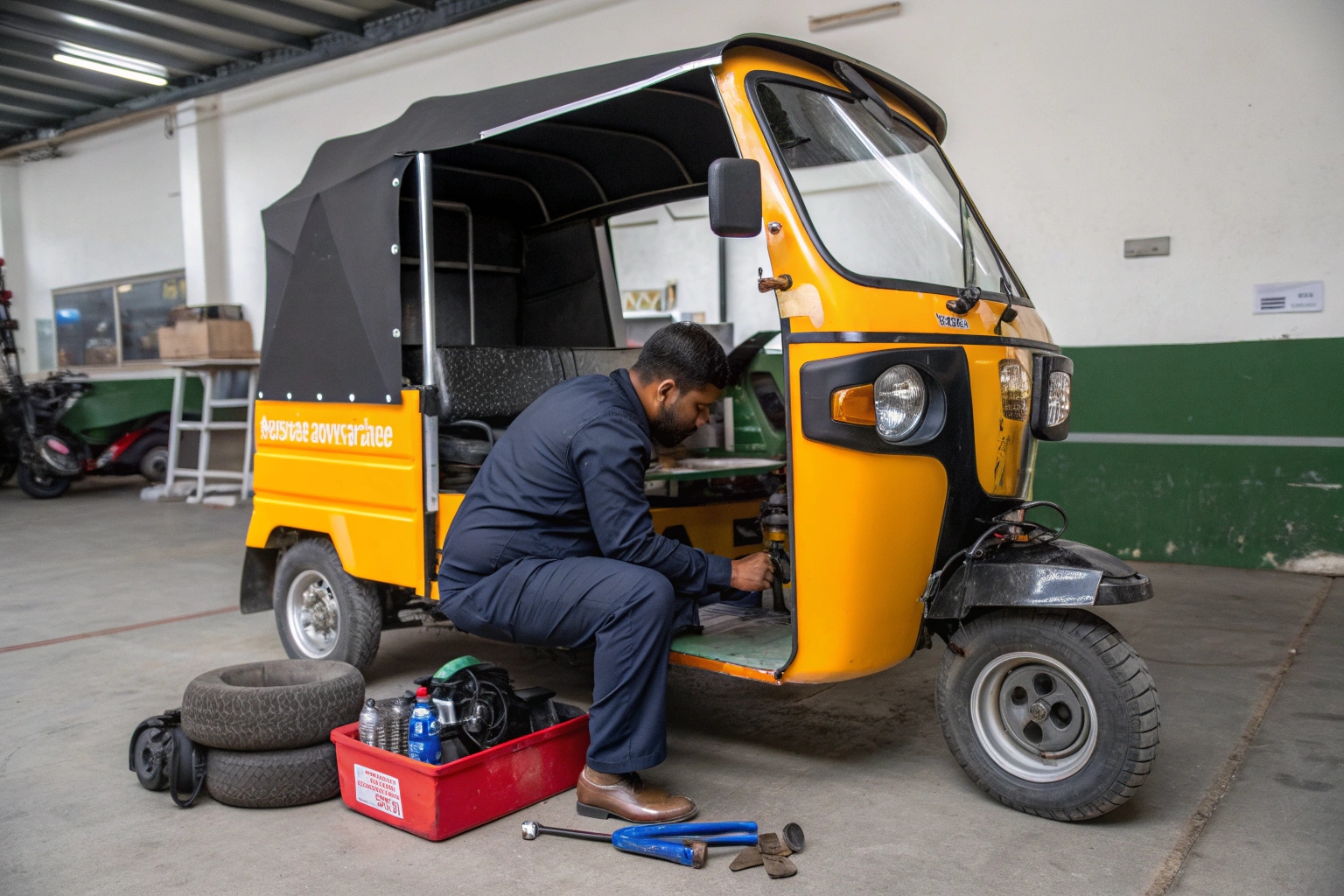
Менің тәжірибемнен фабрика, Мен сізге қарапайым, дәйекті деп айта аламын Техникалық қызмет көрсету кестесі электр машинасының көпшілігін алудың құпиясы. Сіздің B2B клиенттеріңіз үшін, флот операторлары немесе туристік бизнес сияқты, жұмыс уақыты - ақша. Оларды келесіге үйрету Оларға оңай қадамдар жасау олардың инвестицияларын қорғайды, Күту уақытын азайтыңыз, және олардың көліктерінің жылдар бойы сенімді болуын қамтамасыз етіңіз. Маңызды бақылау парағымен жүрейік.
Электрлік машинаның батареясын қалай ұстау керек?
Сіздің тұтынушыңыз батареяны біледі, бұл ең құнды компонент. Олар дұрыс емес зарядтау немесе сақтау оны құртуы мүмкін және қымбат ауыстыруға әкелуі мүмкін деп қорқады.
Батарея зарядталғанын 20% -дан 80% -ға дейін сақтаңыз, оны толығымен босатып, әрбір пайдалану күнінен кейін зарядтаңыз. Тиісті күтім батареяның қызмет ету мерзімі мен жұмысын едәуір кеңейте алады.
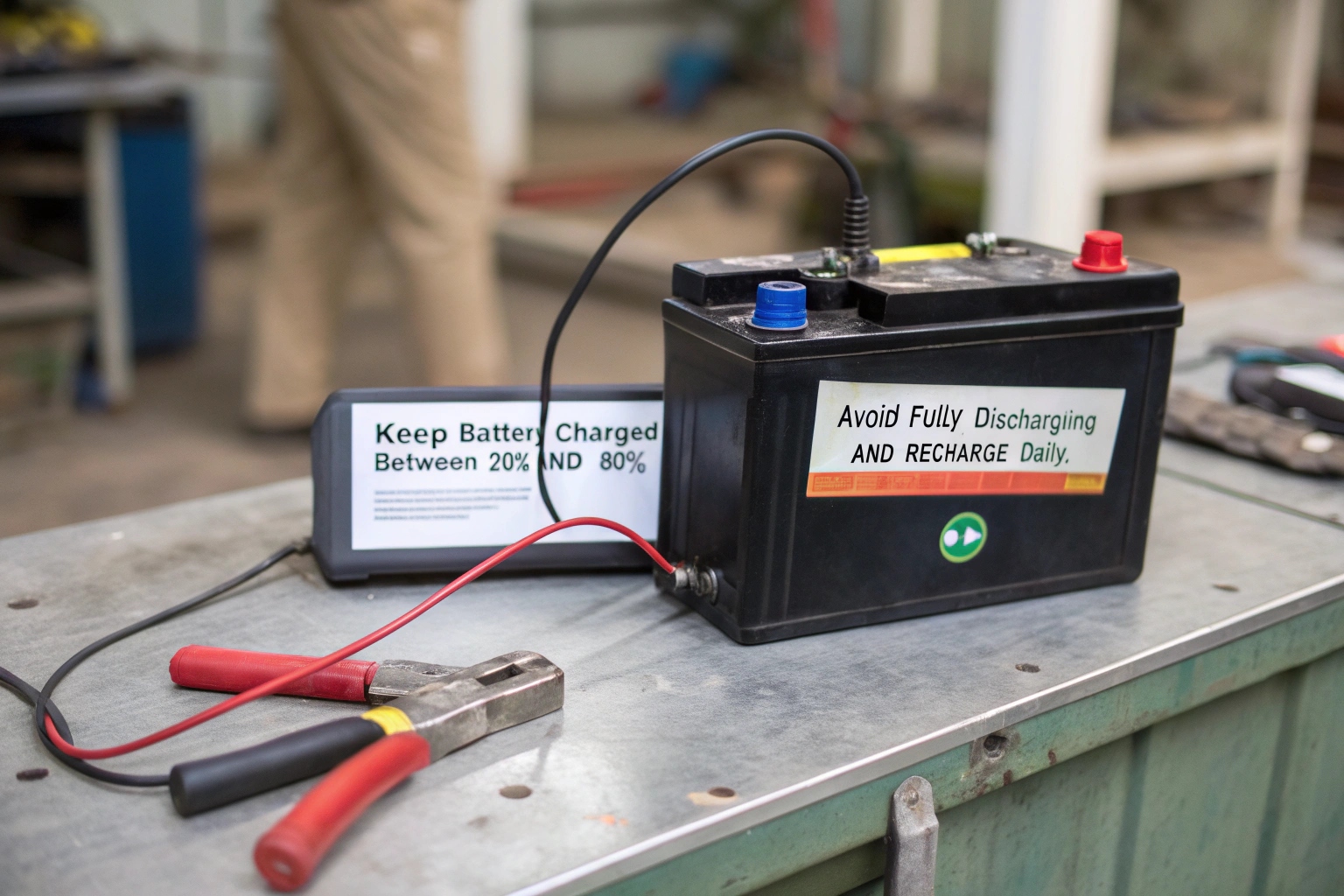
Батарея - бұл электр орталығының жүрегі. Қазіргі уақыттағы Литий-ионды батареялар олар абсолютті шектеулеріне итермесе, пайдалы. Батареяны бірнеше апта бойы толығымен өліп қалуға рұқсат беру - қайтымсыз зақым келтірудің ең жылдам тәсілдерінің бірі. Қарапайым, дәйекті тәртіптің бәрі қажет. Бос емес Tuk-Tuk такси үшін бұл білдіреді Күнделікті зарядтау. Курорттың көрікті жері үшін жиі жұмыс істейтін кемесі үшін, ол аз жұмыс істейді, бұл көлік құралының ешқашан өлі батареямен сақталмайтынын білдіреді.
- Зарядтау әдеттері: Зарядтың 20% төмендеуіне жол бермеңіз. Оны күн жұмысынан кейін қосып, оны толығымен зарядталғаннан кейін розеткадан суырыңыз.
- Сақтау бойынша кеңестер: Егер теледидарды ұзақ уақыт сақтасаңыз, батареяны шамамен 50% зарядтап, салқын, құрғақ, баспана ортасында сақтаңыз.
- Ауыстыру циклы: Литий батареясы жақсы күтім жасайтын аккумуляторға дейін сенімді қызмет көрсету жылдарымен 1000-нан астам зарядтық циклға дейін созылуы мүмкін.
Tuk шиналарын қаншалықты жиі тексеруге болады?
Шиналарды елемеуге оңай, бірақ олар ауқымды, қауіпсіздік және жұмыс істеп тұрған шығындарға әсер етеді. Тегіс шина коммерциялық көлік құра алады, нәтижесінде жоғалған кірістер пайда болады.
Шинаның қысымын ай сайын тексеріп, ай сайын жүгіру жолын тексеріңіз. Дұрыс үрленген шиналар диапазонды 5-10% -ға арттыра алады және көлік құралының қауіпсіздігі үшін өте маңызды, әсіресе жүктеме.
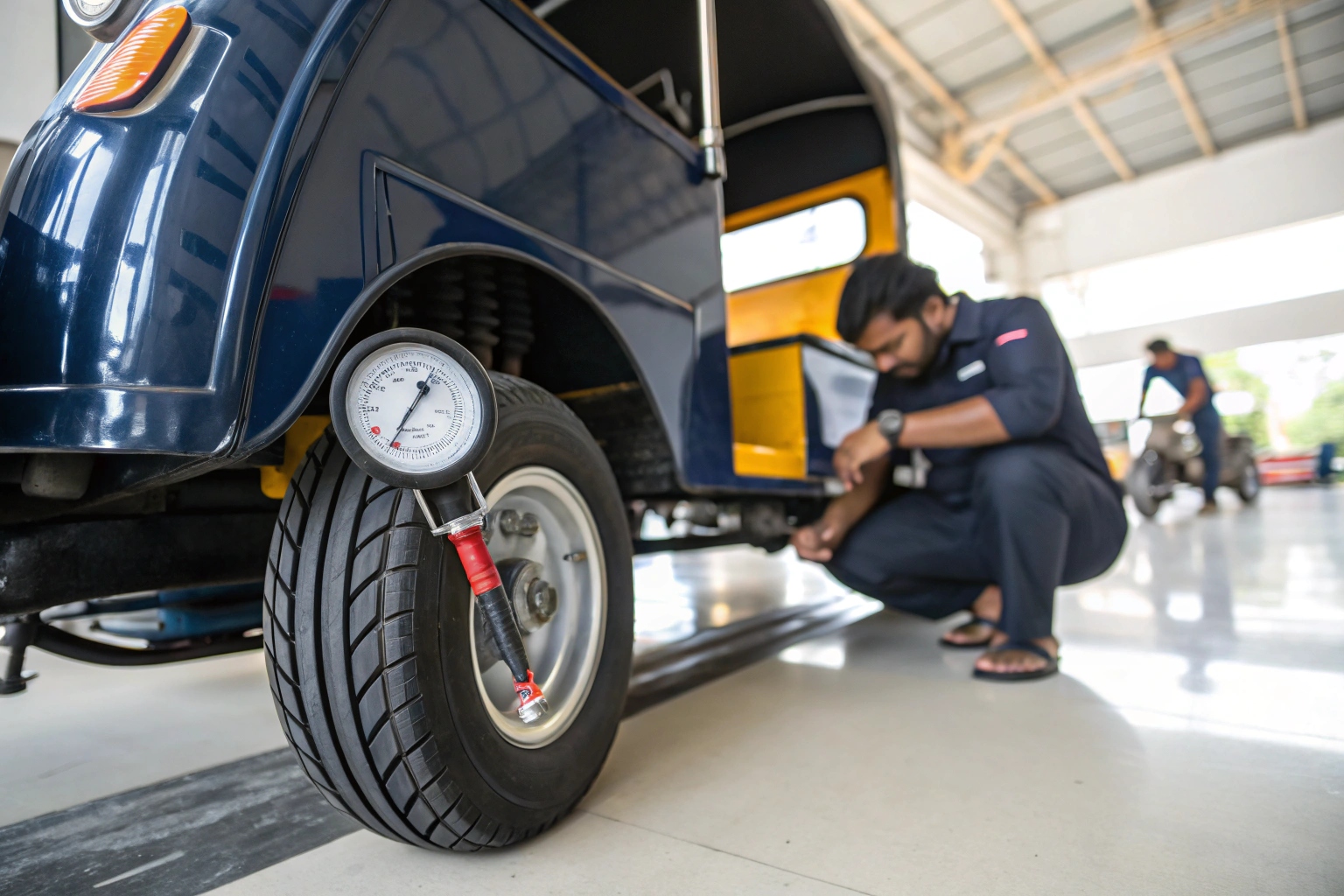
Бұл ең қарапайым, бірақ ең маңызды техникалық қызмет көрсету тапсырмаларының бірі. Мен әрқашан дистрибьюторларым жақсы сапаны қамтамасыз етемін шина қысымы өлшегіш әр сатылыммен. В астындағы шинасы Батареяны көп жұмыс істеуге және батареяны тезірек ағызу үшін моторды көбірек дайындайды. Ауыр жүктемелерді алып жүретін жүк көлігі үшін, дұрыс қысым тұрақтылық үшін өте маңызды және шала туылған шиналардың тозуын болдырмау үшін қажет. Апта сайынғы тексеру екі минуттан аз уақыт кетеді және уақыттың ең жақсы әдісі болып табылады.
| Көлік түрі | Алдыңғы шина қысымы (PSI) | Артқы шина қысымы (PSI) |
|---|---|---|
| Жолаукер Tuk Tuk | 30-32 PSI | 33-35 PSI |
| Жүк көлігі (бос) | 32-35 PSI | 35-38 PSI |
| Жүк көлігі (жүк тиелген) | 35-38 PSI | 40-45 PSI |
Электрлік TUK үшін қандай жоспарлы тексерулер қажет?
Сіздің тұтынушы механик емес. Оларға үлкен, қымбат немесе қауіпті болмай тұрып, аз проблемаларды іздейтін заттардың қарапайым тізімі қажет.
Әр 2 ай сайын тежегіштер, шамдар, сымдар және негізгі қозғалмалы бөліктерді визуалды тексеруді орындаңыз. Көлік құралын таза ұстау және майлау ұзақ мерзімді тозу мен коррозияны болдырмайды.
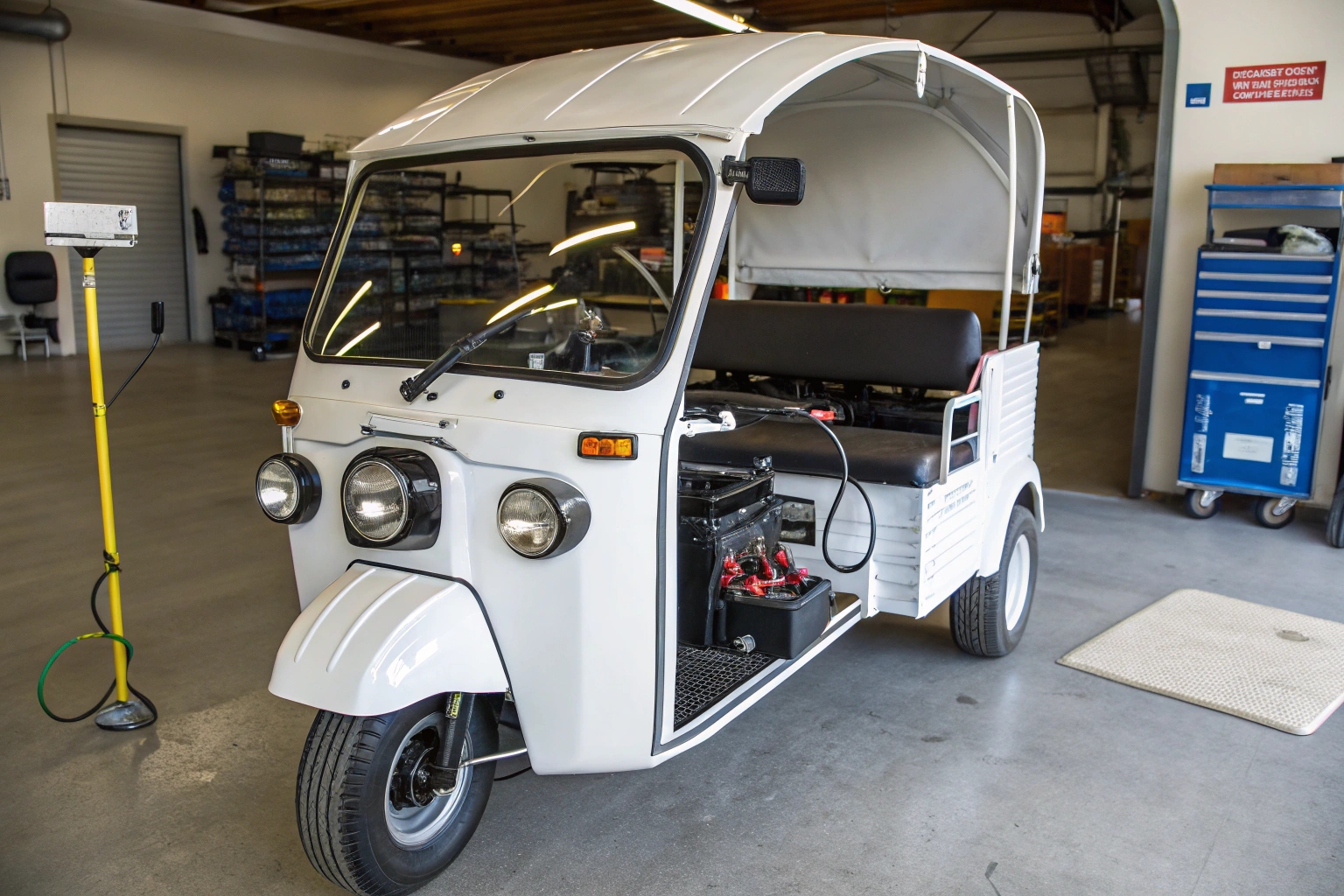
Профилактикалық қызмет көрсету сәтті коммерциялық паркін іске қосудың кілті болып табылады. Жоспарлау арқылы Тұрақты тексерулер, операторлар өздерінің өршуіне дейін ұсақ мәселелерді байқай алады. Бұл күрделі жұмыс емес; Бұл заттарды қарау, тыңдау және сақтау туралы. Таза төмендеме тот баспайды, ал майланған бөліктер тегіс және ұзаққа созылады. Бұл қарапайым бақылау парағы әрбір көлік құралын бірдей жоғары стандартқа, қауіпсіздікті және жұмыс уақытын барынша қамтамасыз етеді.
- Тежегіштер: Тежегіш төсемнің қалыңдығын тексеріңіз және гидравликалық сұйықтықтың деңгейі дұрыс екенін тексеріңіз.
- Шамдар: Тезектелген фаралар, тайылдар, тежегіш шамдар және бұрылыс сигналдары.
- Майлау: Ай сайын, қозғалмалы бөлшектерді майлау пивоталары мен тежегіш байланыстар сияқты.
- Электр жүйесі: Сымдар мен коннекторларды қауіпсіз сәйкестендіру және коррозия белгілері үшін көзбен тексеріңіз.
- Шасси: Кірді кетіру және тоттың алдын алу үшін сыртқы және төменнен тазалаңыз.
Электрлік TUKS кәсіби қызмет көрсетуді қажет етеді ме?
Сатып алушылар электрлік көлік құралына білікті механик тапсыру қиынға соғады деп алаңдауы мүмкін. Сізге қандай кәсіби қызмет көрсету қажет және қажет болған кезде нақтылау керек.
Иә, әрбір 1-2 жыл сайын кәсіби тексерулер ұзақ мерзімді денсаулық үшін өте маңызды, бұл электр жүйесіне және шассиге назар аударады. Бұл қарапайым және аз, жану қозғалтқышының құралына қарағанда аз.
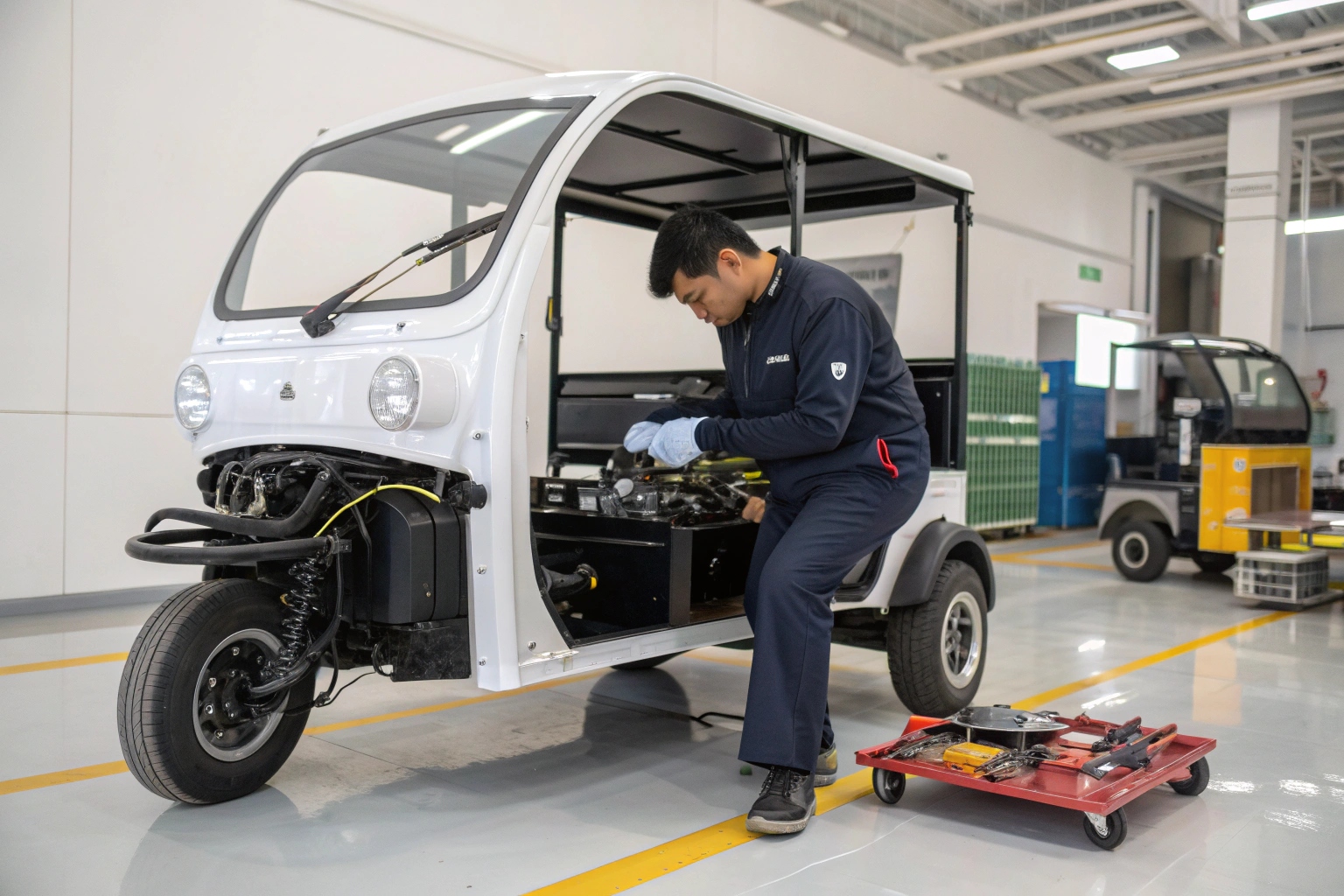
Күнделікті тексерулер қарапайым, ал кейбір тапсырмалар оқытылған техникке жақсы қалды. А Кәсіби қызметке бару Негізгі жүйелердің жетілдірілуін қамтамасыз ету үшін негіздерден асып кетеді. Техника диагностика үшін мотор контроллеріне кіре алады, батарея ұяшықтарының денсаулығы мен қалдықын тексеріп, тежегіш жүйесінің флеш немесе доңғалақты туралау сияқты тапсырмаларды орындай алады. Сондай-ақ, көлік құралының тұтастығы мен кепілдіктерін сақтау үшін кез-келген жөндеу кезінде тек өндіруші мақұлданған қосалқы бөлшектер пайдаланылады деп талап ету. Бұл жоспарланған кәсіби тексеру жан тыныштығын қамтамасыз етеді және көлік құралын қауіпсіз және тиімді қамтамасыз етуді қамтамасыз етеді.
| Қызмет көрсету аралығы | Ұсынылған кәсіби міндеттер |
|---|---|
| 12-24 ай | Толық тежегіш жүйені тексеру және сұйықтықты тексеру / шайқау. |
| Мотор контроллері мен батареяны басқару жүйесін диагностикалау. | |
| Доңғалақты туралау және суспензияның тұтастығын тексеру. | |
| Мотор және беріліс қорабы тығыздағыштарын тексеру. |
Қорытынды
Қарапайым техникалық қызмет көрсету - бұл электр орталығының ұзақ мерзімді мәнін ашудың кілті. Батареяның тұрақты күтімі, апталық шиналар тексерулері және негізгі ай сайынғы тексерулер тиімді, сенімді қызмет жылдарын қамтамасыз етеді.

